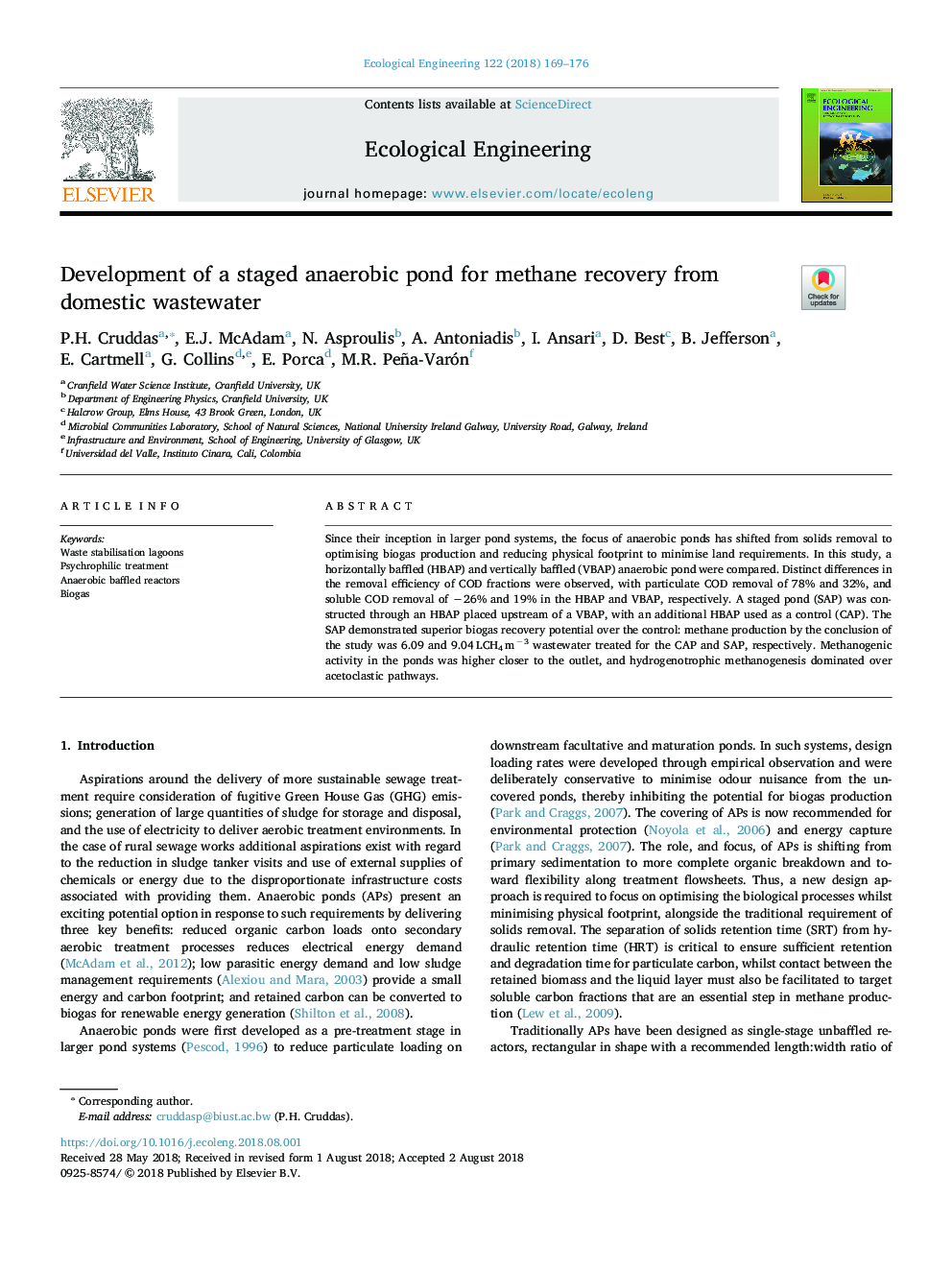| Article ID | Journal | Published Year | Pages | File Type |
|---|---|---|---|---|
| 8847721 | Ecological Engineering | 2018 | 8 Pages |
Abstract
Since their inception in larger pond systems, the focus of anaerobic ponds has shifted from solids removal to optimising biogas production and reducing physical footprint to minimise land requirements. In this study, a horizontally baffled (HBAP) and vertically baffled (VBAP) anaerobic pond were compared. Distinct differences in the removal efficiency of COD fractions were observed, with particulate COD removal of 78% and 32%, and soluble COD removal of â26% and 19% in the HBAP and VBAP, respectively. A staged pond (SAP) was constructed through an HBAP placed upstream of a VBAP, with an additional HBAP used as a control (CAP). The SAP demonstrated superior biogas recovery potential over the control: methane production by the conclusion of the study was 6.09 and 9.04â¯LCH4â¯mâ3 wastewater treated for the CAP and SAP, respectively. Methanogenic activity in the ponds was higher closer to the outlet, and hydrogenotrophic methanogenesis dominated over acetoclastic pathways.
Keywords
Related Topics
Life Sciences
Agricultural and Biological Sciences
Ecology, Evolution, Behavior and Systematics
Authors
P.H. Cruddas, E.J. McAdam, N. Asproulis, A. Antoniadis, I. Ansari, D. Best, B. Jefferson, E. Cartmell, G. Collins, E. Porca, M.R. Peña-Varón,
